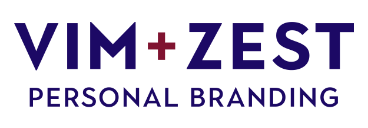Personal Branding builds the leadership communication skills essential to silencing Imposter Syndrome
Imposter Syndrome can hamper the most accomplished of leaders in their career growth or enterprise expansion journey.
There is often a wide gap between who we actually are and who we think others perceive us to be.
Whether they admit it or not, it’s a rare leader who does not experience Imposter Syndrome in their life as they seek to present their authentic self to the world.
In our experience of supporting leaders and entrepreneurs to become more visible, we have seen how mastering leadership communications skills through practical Personal Branding can not only silence Imposter Syndrome but then also open the doors to success and attract new opportunities, by building an authentic and visible public profile.
Distorted Perception
Left unchecked, Imposter Syndrome is a distortion in how we view ourselves that can quietly impede and even derail our professional potential.
Consider how important first impressions are.
Plus, we only have seconds to make that vital first impression that can unlock the opportunity we seek.
When Imposter Syndrome goes unchecked, that first impression can be delivered without the confidence and clarity required to make a positive impact.
If any of this sounds familiar, read on, you’re in the right place.
Silencing Imposter Syndrome in a Practical Way
In this guide, we explore what Imposter Syndrome is, the true cost of not addressing it, why women are more likely to be afflicted and how Imposter Syndrome can affect career transition. But mostly, we will explore how Imposter Syndrome can be effectively silenced by using practical Personal Branding skills.
Often the best way of dealing with fear is making the unknown known. But first, let’s review:
What Is Imposter Syndrome?
Understanding imposter meaning is an important first step to silencing it. Imposter Syndrome is the inability to believe that your success is deserved or is the result of your own efforts, skills and experience. It’s when you feel like a fraud.
Imposter Syndrome is driven by a sense of inadequacy that is not a true reflection. It is a false sense of inadequacy.
Imposter Syndrome is Not Humility
Humility, on the other hand, stems from an honest and genuine assessment of your capabilities in a situation which may have been complex, complicated or simply new.
Research shows that Imposter Syndrome can be caused by single or multiple combined factors, such as work challenges, social pressures, personality proclivities, family environment, and a lack of a sense of belonging.*
Imposter Syndrome Test
Understanding if you are experiencing Imposter Syndrome is an important first step in learning to address it, and to work with it.
The following Imposter Syndrome test helps you identify if the syndrome is influencing your decisions and actions.
The Need to Perfect/Prove Yourself
Do you feel like your work must always be perfect?
- Do you often stay late to get work done, even though no one else does?
- Are you uncomfortable when others see your work before it is completed?
- Do you resent offers of help or status update requests?
- Have you been told you micromanage people or projects?
The Inability to Accept Praise
- Do you feel uncomfortable when someone refers to you as an expert?
- Are you always on the hunt for the next training course?
- Do you answer a compliment with ‘Thanks, but…’
- Do you feel a sense of dread that people will find out you don’t belong or don’t know what they’re doing?
- Do you see opportunities that you want but don’t feel comfortable putting your hat in the ring?
Answering yes to any of the above questions can be an indication that you are living with Imposter Syndrome.
Did you know that certain people are more inclined to suffer from Imposter Syndrome?
Imposter Syndrome: Women
Originally termed the ‘imposter phenomenon’, Imposter Syndrome was identified during a 1978 study of high-achieving women by psychologists Pauline Rose Clance and Suzanne Imes.
While researchers today agree that Imposter Syndrome impacts both men and women, it tends to affect more women and people of minority backgrounds, which reflects dominant social biases and access to opportunities, which reinforces false feelings of inadequacy and self-doubt.
Did you know that 75% of female executives experience Imposter Syndrome in the workplace?
In the same way that certain people can be more inclined to experience Imposter Syndrome, pivotal career transitions can also increase the severity of Imposter Syndrome. The patterns of opportunity and challenge in career changes at 30, 40 and 50 do differ, however there are many commonalities.
Career Change at 30
The passing of a decade tends to be a natural time of reflection. At the age of 30 years, many professionals have established themselves and amassed a solid foundation of experience, often up to ten years experience in a particular field.
If this is you, perhaps there’s been a realisation that your profession or organisation is no longer congruent to your values. Or you want something more? Perhaps to start your own entrepreneurial enterprise which offers a more meaningful professional pursuit and greater purpose. Perhaps you’re seeking a new opportunity to balance the creation of a family?
Whatever the reason, the prospect of moving into a new profession, role, industry or becoming an entrepreneur, means meeting Imposter Syndrome and finding a way to silence it, which we will discuss shortly.
Career Change at 40
If you’re a professional in your forties, perhaps you’re seeking to make a greater impact or attain a C-Suite position or a Board position, either within or outside your industry?
Perhaps you’re seeking to build a new network in a new field or to attain a fully remote role? Or you’re relocating to another state or country or re-engaging in the workforce after having a family? There are many factors that drive career change at 40.
Or perhaps you’ve simply hit the glass ceiling or are experiencing a career stall?
In one way or another, all these factors reveal an aspect or side of Imposter Syndrome.
MYTH: Imposter Syndrome will naturally decrease the older and more successful I become.
Australian billionaire and Co-Founder and CEO of software company Atlassian, Mike Cannon Brookes has spoken openly about his experience of Imposter Syndrome and gave a TedX talk on this subject in 2017.
He is candid. Cannon Brookes speaks about interviewing a candidate for a Human Resources Manager role, having never worked in a company large enough to have a HR department; making notes in board meetings of the acronyms he’d never heard of or sitting in the audience of a prestigious event waiting to see if he’d won International Entrepreneur of the Year – feeling he didn’t deserve to be there.
One of his biggest lessons is that Imposter Syndrome never fully goes away.
The only way to take away the power of Imposter Syndrome is to learn the skills and strategies to silence it.

Career Change at 50
If you’re a highly successful professional in your fifties, perhaps you’re feeling an inner drive to create positive change in meaningful ways.
With more time and freedom, they say it’s the golden years. A giveback time, there’s a harvesting of the honed experience and skills you’ve amassed from a successful career.
Yet with new goals to achieve, rapid technological developments, waves of younger professionals moving up keen to do things differently, there’s a new face to Imposter Syndrome with rapid change, and often ambiguous contexts.
How to Overcome Feelings of Inadequacy
Silencing Imposter Syndrome is a journey, in a terrain frequently characterised by unknown and new frontiers.
So perhaps a gentler, more amenable approach is befriending the beast and making the unknown known? Taking a silencing approach is a far more productive way than trying to overcome Imposter Syndrome entirely.
In this section we explore how practical Personal Branding skills work to silence Imposter Syndrome and overcome feelings of inadequacy or feeling like a fraud:
- Distil your personal narrative and master the art of storytelling
- Upgrade your leadership communication skills
- Let go of perfectionism, befriend the challenging bits and learn how communicate with open-hearted vulnerability and humanity
Each of these key Personal Branding foundations is a strategic development step in Vim + Zest’s Personal Branding Journey.
Master the Art of Storytelling
Whether it’s on cave walls, papyrus reeds, stone tablets or in short 140 character messages, for thousands of years we’ve communicated and recorded our stories.
Stories are the oldest way in which we form our world-view and understand the meaning of life. Stories are a powerful tool that helps both speaker / writer and audience organise information.
Storytelling is intrinsic to Personal Branding and to growing a visible profile. The reason why the best of today’s leaders exceed is because they excel at storytelling.
When done well, authentic Personal Brand storytelling identifies an audiences’ ambition, defines their challenges and provides a plan to conquer these hurdles.
An audience will recall a story far better, and faster, than they will facts, figures and statistics.
In a world where audience behaviours change so fast, there are the perennials that stay constant. There is a structural formula for clear Personal Brand story communication.
Focus on Your Hero
For a story to work, it must have a villain, a hero and tension. It must be structured properly. A story without a hero or villain archetype is boring and holds little interest for an audience.
In narratology and comparative mythology, The Hero’s Journey is the common archetypical template of stories that involve a hero who goes on a quest or adventure, meets a guide, is victorious in a crisis whereupon he or she has met and battled with the challenging inner parts of themselves, and comes back changed or transformed, ready to give or serve.
The hero in the story is not who you think.
The Most Common Mistake
The most common mistake we see in brand communications is the misplacement of the hero in a story.
The hero in your story is not you at all. It is your audience.
Your audience is on a journey, they have a set of aspirations and/or challenges, and you’re the guide that can potentially help them attain success and avoid loss.
If, as a leader, you can refocus your attention away from yourself and onto your audience you will experience the following:
- Your inner critic will have nothing to do, because you are not giving it any attention and this will naturally help this part of you to become more calm and quieter.
- The performative elements of your presentation will naturally reduce. It’s very obvious to your audience when a presentation is inauthentic and performative. When you are comfortable in yourself, your expression will be more natural, candid and more fluid.
- You will become more relaxed, your voice timbre will lower, your breathing will ease, and you will be able to authentically communicate what you’re here to say.
- As you shift your attention to your audience, they become your primary focus and they will feel this prioritised attention and care. Your audience will have more opportunity to connect with your message in a real way.
Shifting your focus onto your real hero, your audience, is the first and best step you can take to help you to silence Imposter Syndrome and one of the foundations of your Personal Brand.
Additionally, refraining from focusing on yourself will naturally pull back the constant editing and critiquing of yourself as ‘not good enough’, inadequate or less than.
We take the pressure off ourselves.
We naturally present in a more genuine and welcoming way. We convey our messages and are more likely to attract opportunities.
Be Generous
Simple but true – generosity begets generosity. Ask yourself, what are the skills, passions and gifts you can offer that add value to your hero’s life? When you naturally give, with no strings attached, when you share your energy and your passion generously, you naturally add an energy into the space.
Exploring your gift also helps identify a key element of your Personal Brand – your key value proposition. The reason people would choose to work with you over others.
A compelling value proposition is the secret to mastering how to self yourself without feeling like a cheesy salesperson.
Your generosity becomes an invitation in the space, rather than a ‘sell’, trying to convince your audience to take the action you want them to. We naturally begin to silence our inner fraudster.
Upgrade Your Leadership Communication Skills
It’s fascinating how many times we come across leaders and managers who assume that other leaders are born as natural public presenters, extroverts who take to the stage and speak off the cuff without effort or preparation.
Leadership Communications is a Learned Skill
The reality is that leadership communication and public speaking are learned skills. Every impeccable speaker you see has completed public speaking courses, media training or learned the art of storytelling.
Mastering leadership communication skills requires you to confront the unknown, the fears of being visible and actively address any feelings of inadequacy.
This act of learning, practicing and refining your public presentation in a variety of formats – talks, presentations, webinars, podcasts, media interviews, social media feeds etc is what grows presence and builds confidence. As your confidence grows, your feelings of inadequacy begin to abate. And it’s also very common to be coached by a communications specialist or a career coach.
During the Personal Branding Journey, leadership communication skills are a key practical coaching focus. Unlike other public speaking courses and programs, the Personal Branding Journey allows you to practice communications skills, define your key messages and craft your story.
Gravitas
True excellence in leadership communication is about your ability to deliver a message with gravitas.
Gravitas is achieved when your presence has a balance of both authority and empathy. You are fully present as yourself, not seeking validation from outside yourself. Your presence invites trust and respect.
Authority = credibility gained by sharing experience, insight and adding value to the audience
Empathy = providing the audience with the sense that you understand them through a shared value or experience
We’ve all witnessed a leader who is qualified to be sharing the information they are communicating but they come across as transactional, robotic or inauthentic. This happens when they are communicating with authority but not enough empathy.
Empathy is achieved by sharing elements of your own personal story in a way that shows you share common values and you understand how they are feeling, what they are going through.
Communicating with gravitas allows you to build heightened levels of trust with your audience. Trust and value alignment is the basis of any relationship and this is what helps to propel your audience or hero through their journey with you as their guide.
Let Go of Perfectionism
Perfectionism paralyses. A common symptom of Imposter Syndrome perfectionism causes us to delay action in order to continually refine ourselves or a project – to make it perfect.
Practicing self-compassion helps us overcome perfectionism.
- Identify your perfectionism behaviours and recognise how they negatively impact your decisions or behaviours.
- Set realistic goals and deadlines.
- Give yourself permission to make mistakes. Consider that mistakes are a valid mechanism for learning and improvement.
- Focus on meaning over perfectionism. Ask yourself, does what you’re doing accomplish its purpose rather than is it perfect?
The state of being ‘perfect’ is a concept that is constantly moving as the scenario and context of what you’re doing is changing. It also differs from one individual to the next. As such, no one thing can ever be perfect.
Focus on meaning and motion to create momentum and get results.
Key Takeaways: Master leadership communication skills to silence Imposter Syndrome
- Nearly all leaders experience varying levels of Imposter Syndrome, so take heart – you’re in good company!
- Imposter Syndrome can erode our ability to make a strong first impression, which can result in a loss of opportunity and it can also hinder us from reaching our potential. So it’s important to not ignore Imposter Syndrome, but to consider how it can be used to propel you forward to a place where you’re more comfortable sharing your gifts, skills and experience.
- Authentic Personal Branding can help people silence Imposter Syndrome by mastering the leadership and presentation communication skills necessary to attract new opportunities by building a compelling and highly profile.
Vim + Zest Personal Branding is a specialist Branding and Marketing agency for people and organisations that matter. We help leaders to create impact to build a better world.
* Tulshyan and Burey, (2021), Stop Telling Women They Have Imposter Syndrome. Harvard Business Review
** Paulise, Luciana, (2023), 75% of Women Executives Experience Imposter Syndrome in the Workplace. Forbes




